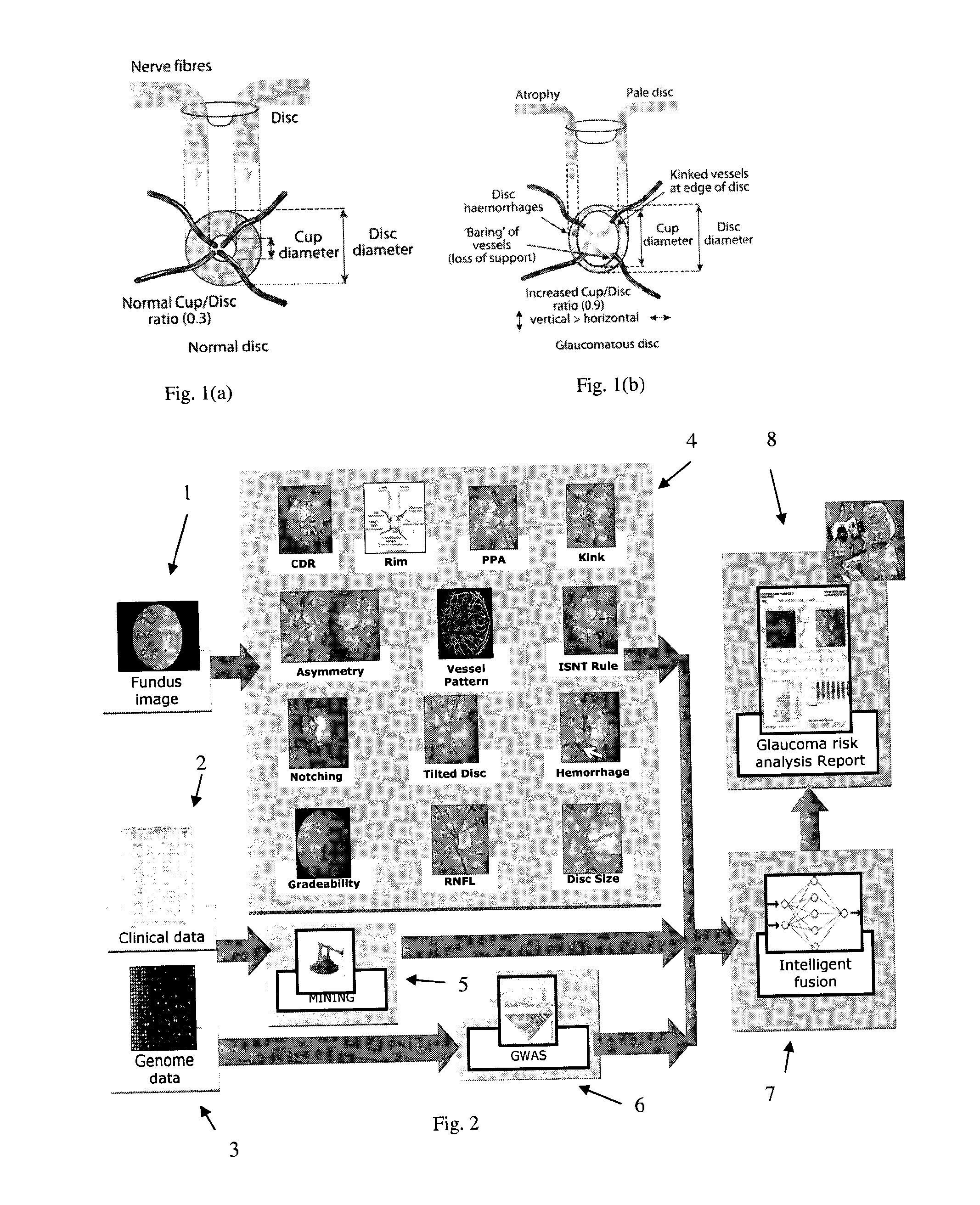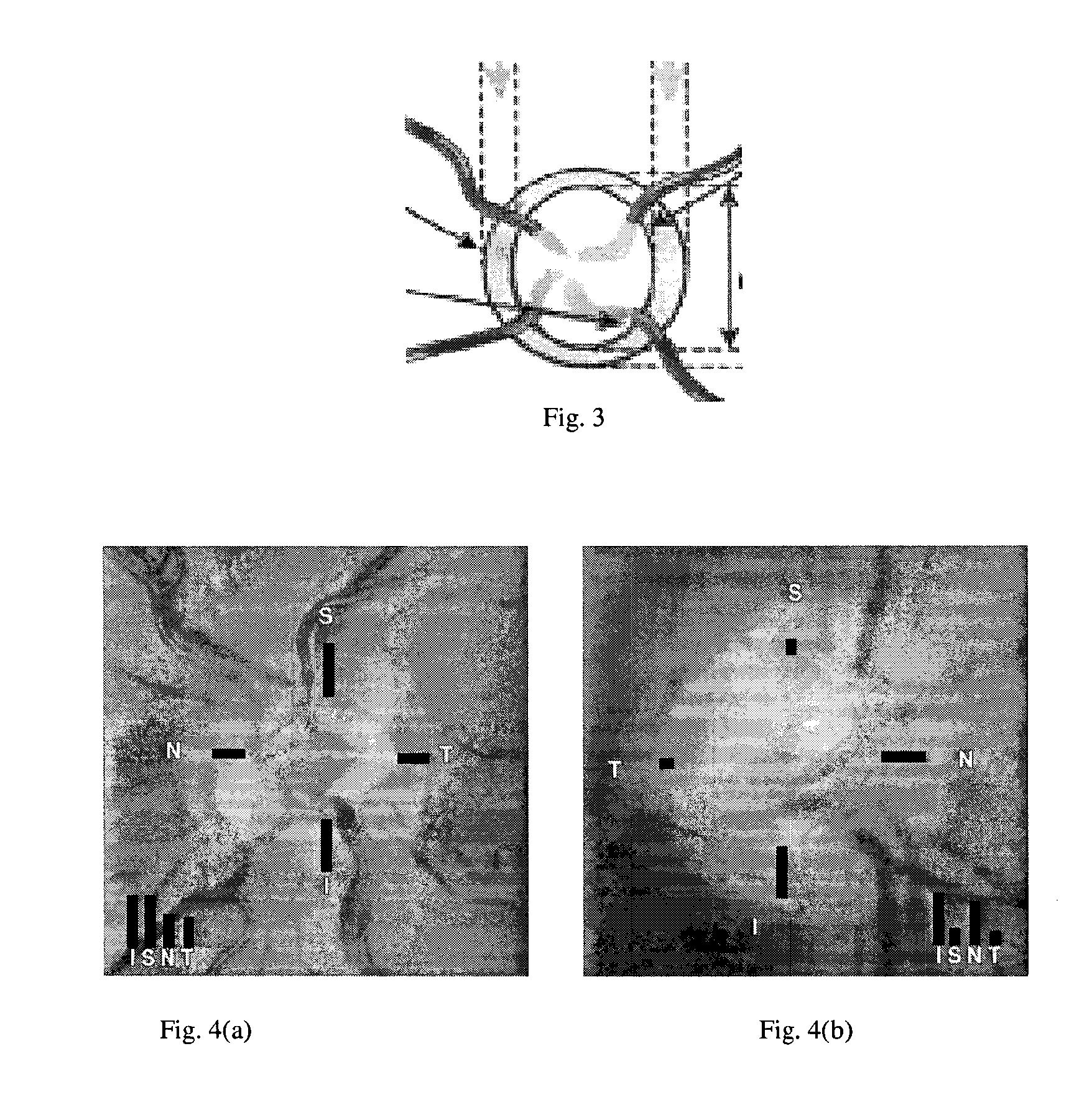Obtaining data for automatic glaucoma screening, and screening and diagnostic techniques and systems using the data
a technology of automatic glaucoma and data acquisition, applied in image data processing, medical data mining, othalmoscopes, etc., can solve the problems of poor sensitivity of current tests, low cost effectiveness of routine glaucoma screening in the whole population, and loss of peripheral vision
- Summary
- Abstract
- Description
- Claims
- Application Information
AI Technical Summary
Benefits of technology
Problems solved by technology
Method used
Image
Examples
Embodiment Construction
[0055]Section 1 of the following text describes an embodiment of the invention (“AGLAIA”). In section 2 it describes four optional features of the embodiment, the first three of which have application to other systems for studying fundus images.
1. The Embodiment
[0056]The structure of an embodiment of the invention is illustrated schematically in FIG. 2. The embodiment is referred to as “AGLAIA” (Architecture for automatic glaucoma diagnosis and its genetic association study through medical image informatics). There are three inputs to the system. A first input is at least one (typically, exactly one) non-stereo fundus image 1 of each eye of a subject. A second input is clinical data 2 describing the medical history of the subject. The third input is genome data 3 (genetic data), for example data obtained from a DNA microarray. The DNA microarray typically measures the respective levels of expression in the subject of each of a large number of genes, or detects single nucleotide poly...
PUM
 Login to View More
Login to View More Abstract
Description
Claims
Application Information
 Login to View More
Login to View More - R&D
- Intellectual Property
- Life Sciences
- Materials
- Tech Scout
- Unparalleled Data Quality
- Higher Quality Content
- 60% Fewer Hallucinations
Browse by: Latest US Patents, China's latest patents, Technical Efficacy Thesaurus, Application Domain, Technology Topic, Popular Technical Reports.
© 2025 PatSnap. All rights reserved.Legal|Privacy policy|Modern Slavery Act Transparency Statement|Sitemap|About US| Contact US: help@patsnap.com



